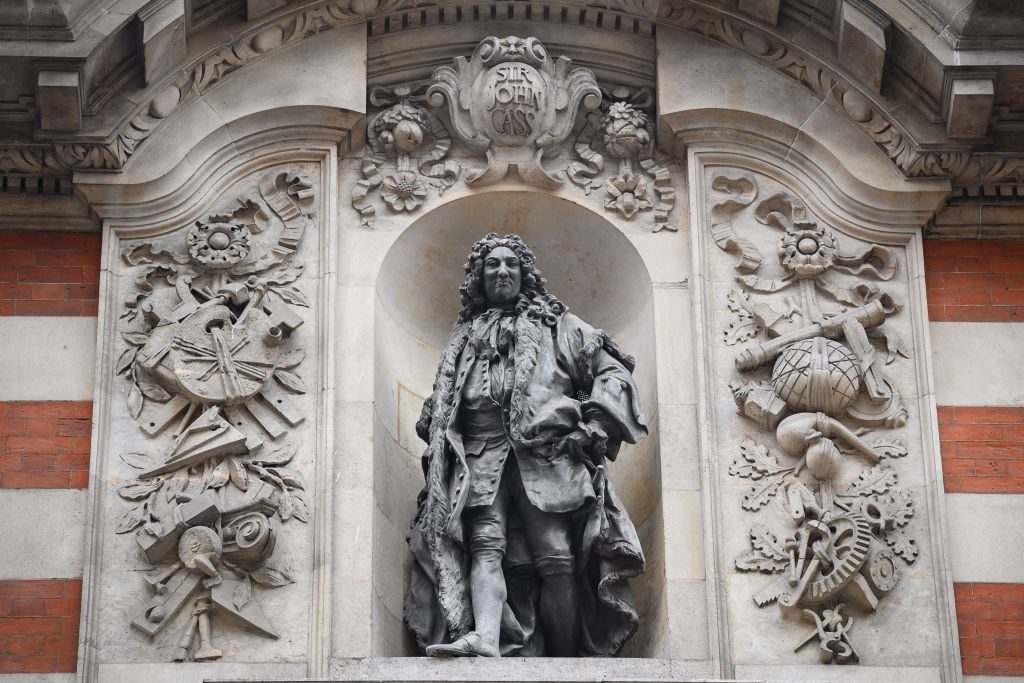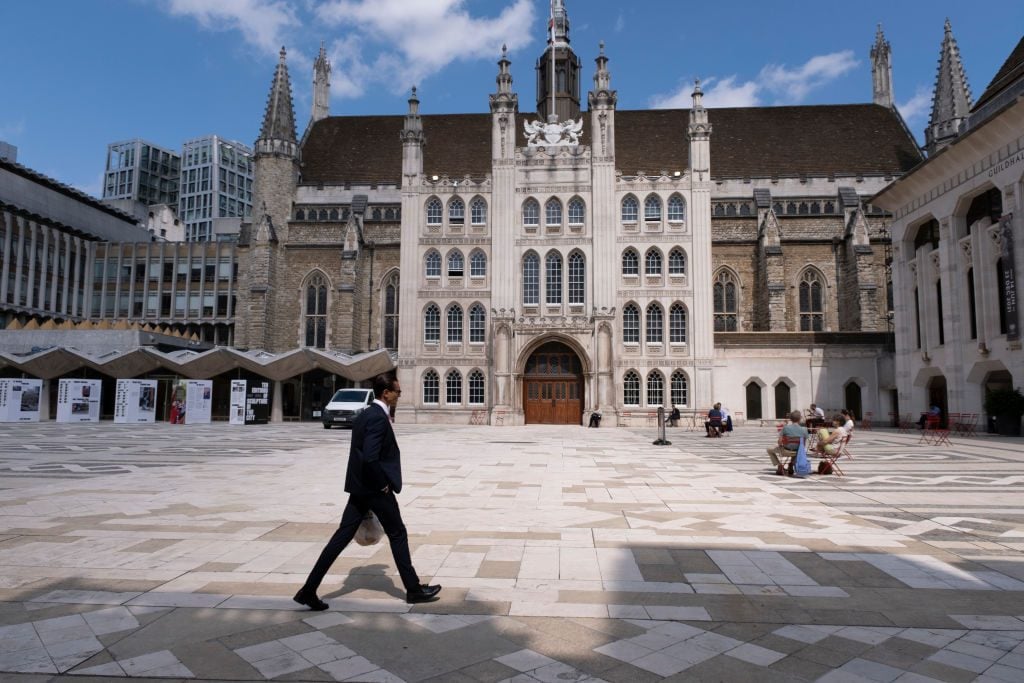Politics
In a Reversal, London Will Keep Two Statues of Slaveowners on View (But With Explanatory Texts)
Plaques will now be installed alongside the memorials of William Beckford and Sir John Cass.

Plaques will now be installed alongside the memorials of William Beckford and Sir John Cass.

Taylor Dafoe

A pair of prominent monuments celebrating British politicians with ties to the transatlantic slave trade will remain on view in London, a city agency voted last week. The move effectively reversed an earlier decision, made at the beginning of this year, to remove the controversial objects from view.
The statues of William Beckford and Sir John Cass will be “retained and contextualized,” according to an announcement from the City of London Corporation, the municipal governing body that oversees the historic Square Mile financial sector where the memorials are located. Plaques will now be installed alongside the memorials with information about the figures’ ties to slavery.
“We’ve carefully considered this matter, taking into account strong feelings on both sides of the argument, and made what we think is a sensible, proportionate response to a sensitive issue,” said Doug Barrow, the chair of a special subcommittee formed around the Beckford and Cass statues, in a statement. “It enables us to acknowledge and address the legacy of our past with openness and honesty—not to try and erase history but to place it in its proper context.”

Plaza outside Guildhall on 11th August 2021 in London, United Kingdom. Photo: Mike Kemp/In Pictures via Getty Images.
Established in March, Barrow’s committee, called the Statues Working Group, is tasked with developing a slate of educational programs around the memorials that situates them in the ongoing debate around public monuments. Ahead of this month’s vote, the group put together a report that recommended the statues be kept in place.
“We can’t be blind to the fact the history of the city is inextricably linked to slavery, which is a stain on our past and, shockingly, remains a feature of life today in many parts of the world,” the group chair added.
Neither Barrow nor a spokesperson for the Statues Working Group responded to a request for comment.
Beckford, a two-time Lord Mayor of London in the 1700s, owned thousands of slaves across his family’s sugar plantations in Jamaica. Those laborers were likely acquired through the Royal African Company, a mercantile business that trafficked in slaves, where Cass, a Member of Parliament in the 18th century, served multiple executive functions.
In January, the City of London Corporation voted to relocate the two statues from their place at the Guildhall municipal building in the Moorgate area of London and replace them with new works. Their decision followed a recommendation from a corporation Itaskforce established after the wave of race-related protests in 2020.
“The slave trade is a stain on our history and putting those who profited from it literally on a pedestal is something that has no place in a modern, diverse city,” the co-chair of the taskforce, Caroline Addy, said in a statement at the time.
Very productive conversation about protecting heritage for future generations
Agreed to jointly set up a working group & produce guidelines to put the govt's retain and explain policy into practice, so that more people can engage with our shared past pic.twitter.com/TYkWVLpttd
— Oliver Dowden (@OliverDowden) February 23, 2021
But the corporation’s stance on the monuments did not align with the “retain and explain” approach preferred by many federal government leaders. The vote to remove the Beckford and Cass sculptures came just days after the U.K.’s secretary for housing and local government, Robert Jenrick, introduced legislation that would require the federal government to approve the removal of any public statue.
The following month, U.K. culture secretary Oliver Dowden held a meeting with leaders from some of the country’s top cultural institutions, including Arts Council England and the British Museum, urging them to “defend our culture and history from the noisy minority of activists constantly trying to do Britain down,” the Art Newspaper reported.